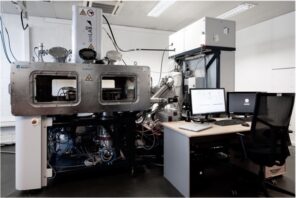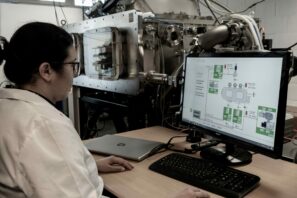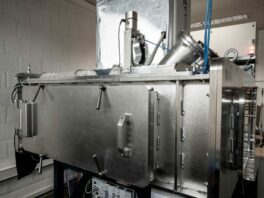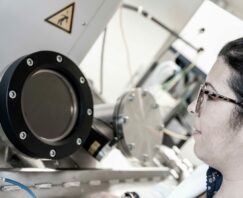Ionlab 400
Ion beam implantation is a vacuum technology which improves tribological (wear, friction, hardness...), physical (optical, electrical, ...) or physicochemical (corrosion resistance, ...) properties of materials.
The principle of ion implantation consists in accelerating very energetic ions (5 to 40keV) and implanting them in the materials to be treated. The ion, while penetrating the material, will lose its kinetic energy in collisions with the electrons and nuclei of the atoms, thus modifying the local atomic organization and the crystal structure of the solid.
The nature of the ions, their mass, their energy as well as the implanted dose will help monitoring the properties of the material.
Advantages:
- It is a low temperature treatment. It can be applied directly to finished products. Any type of solid and/or vacuum resistant material can be treated.
- It is not a deposit, so there is no risk of delamination or overthickness.
- The technology can implant immiscible elements or exceed the solubility limits.
- The process is finally industrializable and ecological (no environmental impact, no waste).
- The disadvantages are that the beam is directional, so the surfaces to be treated must be facing each other. The implanted thicknesses are relatively small (< 1µm). However, implantation - diffusion treatments are possible to increase the penetration depth.
Main properties:
- Mechanics: hardness (nano, micro), wear resistance, lower friction coefficient, fatigue resistance
- Chemistry: resistance to corrosion (pitting, salt spray, etc.) and oxidation at high temperatures
- Physicochemistry: modification of surface energy (surface structuring, hydrophobicity), catalytic properties, optical properties (coloring, reflectivity, etc.), improved adhesion (interfaces), and general biocompatibility.



